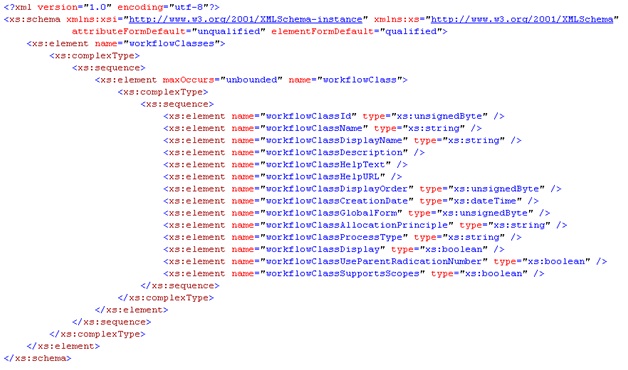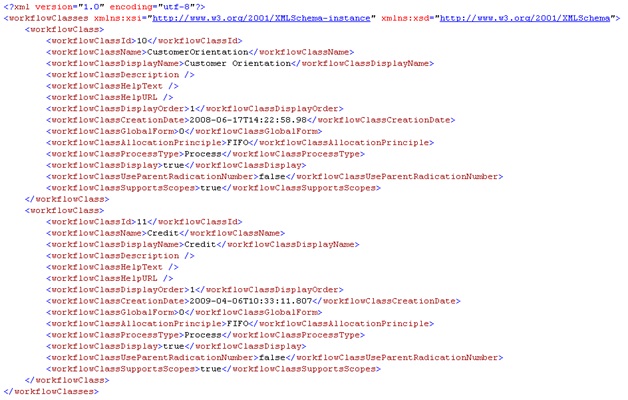GetWorkflowClasses
From Business Process Management, BPM and Workflow Automation Wiki | BizAgi BPMS
<keywords content="keywords"> getWorkflowClasses, getworkflowclasses, getWorkflowClassesAsString, getworkflowclassesasstring, get Workflow Classes, get workflow classes, SOA Layer, soa layer, WorkflowEngineSOA, workflowenginesoa, Workflow Engine SOA, workflow engine soa </keywords>
Contents |
getWorkflowClasses
A method from the WorkflowEngineSOA web service used to get all processes of a given category from an external application. This document also applies to the method getWorkflowClassesAsString.
Description
With this method it is possible to obtain information about all processes belonging to a category specified as a parameter. For both, getWorkflowClasses and getWorkflowClassesAsString the parameter is an XML with the name of the category for which the processes are required; the first method uses XmlDocument format and the second one uses strings.
Input Data
The following is the schema of the expected XML (copy it from here):
Parameter 1 (XmlDocument or String Type)
BizAgiWSParam: Root node.
category: Contains the name of the category to be consulted (enter the Name, not the display name).
Example
To consult processes belonging to the category "Loans", the request XML will be:
Output Data
The schema of the returned XML is as follows (copy it from here):
The response includes information of all processes in the category. Here is the description of each data contained in the returned XML.
workflowClasses: This is the root node. Contains a workflowClass node for each process in the given category.
workflowClass: The information in this node is all about the process (process metadata) .
workflowClassId: Identification number (or key) of the process.
workflowClassName: Name of the process.
workflowClassDisplayName: Display name of the process.
workflowClassDescription: Process description.
workflowClassHelpText: Process help text.
workflowClassHelpURL: Help URL for the process.
workflowClassDisplayOrder: The order in which the process will be viewed in the web application.
workflowClassCreationDate: Creation date of the process.
workflowClassGlobalForm: Identification number of the process’s global form (zero if it is not configured).
workflowClassAllocationPrinciple: Reserved for future use.
workflowClassProcessType: Process type.
workflowClassDisplay: Indicates whether the process is visible or not.
workflowClassUseParentRadicationNumber: Indicates if a case of this process uses its own creation number or the same number as the parent process (if it is a subprocess).
workflowClassSupportScopes: Indicates if the process supports Bizagi "scopes"; which is an efficient method of data persistence.
Example
Here is the XML in response to the one sent as an example:
Go to SOA Layer <comments />




